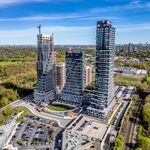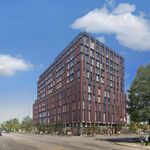Degnaw,
Toronto's historic residential vernacular is quite unique, at least from what I've explored in other American and Canadian cities. It chiefly consists of two-and-a-half story semi-detached Victorian houses on deep, narrow lots. The space between houses is barely two or three feet wide so the effect one gets when walking down a leafy residential street here is that they are rowhouses. The working classes of Toronto lived in simple cottages or more squat 1.5 story rowhouses that had slightly less ornamentation than the 'bay and gables' that I just described but were more adorned than, say, a comparable house in South Philadelphia or Baltimore. At one time Ontario was covered with big, old trees and I guess everyone got a piece of the pie with frilly woodwork on their porches
What's really interesting is that I find that Toronto's upper classes lived in smaller, less ornate mansions than their American counterparts. There are some grand and stately houses in Rosedale, parts of the Annex and whatever is left on Jarvis Avenue but, for the most part, American mansions and country homes from that time period tend to exude more wealth.
Around 1910 Toronto seemed to have exploded in population and a lot of what was built around town were semi-detached houses in similar fashion to the Victorian ones I described but with a more simple gable roof. American cities seem to have had a higher standard of living at this time, which may account for why Cleveland and Detroit - which also exploded in population - tended to build car-oriented housing as early as the 1910s while we were fashionably backward and built pedestrian-oriented communities until at least the middle 1920s. We continued to be fashionably backward which is why we have art deco office towers built as late as 1950 and didn't even consider abandoning our streetcar system until the 1970s when it could be saved.




